The Ultimate Guide to Water Restoration Marketing: 10 Powerful Strategies for 2024
In the fast-paced world of water damage restoration, staying ahead of the competition is crucial. As we dive into 2024, the landscape of marketing for restoration businesses continues to evolve, presenting both challenges and opportunities for companies looking to make a splash in the industry.
Imagine this: It’s 3 AM, and a homeowner wakes up to the sound of rushing water. Their basement is quickly filling up, and panic sets in. In this moment of crisis, who do they call? If you’re in the water restoration business, your goal is to be the first name that comes to mind. But in a sea of competitors, how do you ensure your company stands out?
Welcome to the world of water restoration marketing – a field as dynamic and ever-changing as the waters we manage. In this comprehensive guide, we’ll explore ten powerful marketing strategies that will help your water restoration business not just stay afloat, but ride the wave of success in 2024 and beyond.
Before we dive in, let’s consider the scope of the opportunity before us. According to recent industry reports, the global water damage restoration market is projected to reach a staggering $41.1 billion by 2026. That’s a lot of leaky pipes, flooded basements, and storm damage – and a lot of potential customers in need of your expertise.
So, are you ready to turn that trickle of leads into a flood of opportunities? Let’s jump in and explore the ten most effective water restoration marketing strategies for 2024!
1. Understanding the Water Restoration Market Landscape
Before we dive into specific marketing tactics, it’s crucial to gain a comprehensive understanding of the current market landscape. The water restoration industry is constantly evolving, influenced by factors such as climate change, urbanization, aging infrastructure, and advancements in restoration technology.
Current Trends in the Water Damage Restoration Industry
- Increased Demand Due to Climate Change: With the rise in extreme weather events, there’s a growing need for water restoration services. Hurricanes, floods, and severe storms are becoming more frequent, leading to a surge in water damage incidents.
- Technological Advancements: The industry is seeing rapid adoption of new technologies like thermal imaging cameras, moisture meters, and advanced drying equipment. These tools not only improve the efficiency of restoration work but also serve as selling points in marketing efforts.
- Focus on Sustainability: There’s a growing trend towards eco-friendly restoration practices. Customers are increasingly looking for companies that use green cleaning products and energy-efficient equipment.
- Emphasis on Quick Response Times: With water damage, time is of the essence. Companies that can guarantee rapid response times are gaining a competitive edge.
- Rise of Preventive Services: More restoration companies are offering preventive services, such as home inspections and maintenance plans, to help homeowners avoid water damage in the first place.
Key Challenges Faced by Water Restoration Businesses
- Intense Competition: The low barriers to entry in this industry mean that new competitors are constantly emerging. Standing out in a crowded market is a significant challenge.
- Seasonal Fluctuations: Demand for water restoration services can be highly seasonal, with spikes during storm seasons and lulls during drier periods. This can make resource allocation and cash flow management challenging.
- Insurance Company Relationships: Many restoration jobs are paid for by insurance companies. Building and maintaining positive relationships with insurers while also advocating for customers can be a delicate balance.
- Keeping Up with Technology: The rapid pace of technological advancement in the industry means companies need to continually invest in new equipment and training.
- Regulatory Compliance: The restoration industry is subject to various regulations regarding safety, environmental protection, and handling of hazardous materials. Staying compliant while remaining competitive can be challenging.
Identifying Your Target Audience and Their Pain Points
Understanding your target audience is crucial for effective marketing. While anyone can experience water damage, certain groups may be more likely to need your services:
- Homeowners: Particularly those in flood-prone areas or with older homes.
- Property Managers: Responsible for multiple properties and often need quick, reliable service.
- Business Owners: Especially those in industries where water damage could severely impact operations.
- Insurance Agents: Often the first point of contact for people experiencing water damage.
Common pain points for these audiences include:
- Stress and anxiety over property damage
- Uncertainty about the restoration process
- Concerns about cost and insurance coverage
- Fear of mold and long-term structural damage
- Need for quick response and efficient service
Analyzing Your Competitors’ Marketing Strategies
Take time to research what your competitors are doing:
- Online Presence: Analyze their websites, social media profiles, and online ads.
- Service Offerings: Are they specializing in certain types of restoration or offering unique services?
- Pricing Strategies: How do they position themselves in terms of pricing?
- Marketing Channels: Which platforms are they using to reach potential customers?
- Brand Messaging: What key messages are they emphasizing in their marketing?
By understanding these aspects of the market landscape, you’ll be better equipped to create marketing strategies that resonate with your target audience and set you apart from the competition.
2. Building a Strong Online Presence for Your Water Restoration Business
In 2024, your online presence is often the first point of contact with potential customers. When water is rising in someone’s home, they’re likely to turn to Google before their phonebook. Here’s how to ensure your water restoration business shines online:
Optimizing Your Website for Local SEO
Local SEO is crucial for water restoration businesses, as most of your customers will be in your immediate service area. Here’s how to optimize:
- Claim and Optimize Your Google My Business Listing: Ensure your business name, address, and phone number are consistent across all online platforms.
- Create Location-Specific Pages: If you serve multiple areas, create individual pages for each location, with unique content and local keywords.
- Use Local Keywords: Incorporate location-based keywords like “water damage restoration in [City Name]” throughout your website.
- Get Local Backlinks: Partner with local businesses, sponsor local events, or get listed in local business directories to build local backlinks.
- Encourage and Manage Reviews: Positive reviews can significantly boost your local SEO. Encourage satisfied customers to leave reviews and respond promptly to all reviews, both positive and negative.
Creating Valuable, Informative Content for Potential Customers
Content is king in the digital world. By providing valuable information, you position yourself as an expert and build trust with potential customers:
- Blog Regularly: Share tips on water damage prevention, what to do in case of flooding, how to choose a restoration company, etc.
- Create How-To Videos: Visual content can be particularly engaging. Create videos demonstrating basic water damage mitigation techniques or explaining the restoration process.
- Develop Downloadable Resources: Create guides, checklists, or e-books that provide value to your audience. These can also serve as lead magnets.
- Use Infographics: Visual representations of data or processes can be highly shareable and informative.
- Showcase Case Studies: Share detailed accounts of successful restoration projects to demonstrate your expertise and results.
Leveraging Google My Business for Increased Visibility
Google My Business (GMB) is a powerful tool for local businesses:
- Keep Your Information Up-to-Date: Regularly check and update your business hours, services, and contact information.
- Use GMB Posts: Share updates, offers, or events directly on your GMB listing.
- Add Photos and Videos: Visual content can make your listing more engaging and informative.
- Answer Questions: Monitor and respond to questions asked through your GMB listing.
- Utilize GMB’s Messaging Feature: If available in your area, turn on the messaging feature to allow potential customers to contact you directly through your listing.
Implementing a Mobile-First Approach for Emergency Situations
Given the urgent nature of water damage, many of your potential customers will be searching for help on mobile devices:
- Ensure Your Website is Mobile-Responsive: Your site should look good and function well on all device sizes.
- Optimize Page Speed: Mobile users expect fast-loading pages. Compress images, minimize code, and leverage browser caching to improve load times.
- Use Click-to-Call Buttons: Make it easy for mobile users to call you directly from your website or Google listing.
- Implement AMP (Accelerated Mobile Pages): This can significantly improve your page load speed on mobile devices.
- Design for Thumbs: Ensure buttons and links are large enough and spaced appropriately for easy tapping on mobile screens.
By focusing on these aspects of your online presence, you’ll ensure that when potential customers search for water restoration services, your business is not only visible but stands out as the clear choice.
3. Harnessing the Power of Social Media for Water Damage Marketing
Social media isn’t just for sharing vacation photos or funny memes – it’s a powerful tool for water restoration marketing. When used effectively, social media can help you build brand awareness, engage with your community, and even generate leads. Here’s how to make the most of social media for your water restoration business in 2024:
Choosing the Right Social Media Platforms for Your Business
Not all social media platforms are created equal, and you don’t need to be on all of them. Focus your efforts on the platforms where your target audience is most active:
- Facebook: With its broad user base, Facebook is often a good choice for local businesses. It’s great for sharing a mix of content types and targeting specific demographics.
- Instagram: If your target audience skews younger, Instagram can be an excellent platform. It’s particularly good for sharing visual content like before-and-after photos.
- LinkedIn: For B2B marketing (e.g., targeting property managers or insurance agents), LinkedIn can be very effective.
- Twitter: While not as visually oriented as other platforms, Twitter can be useful for sharing quick tips, industry news, and engaging in real-time conversations.
- YouTube: For businesses focusing on video content, YouTube is a must. It’s great for how-to videos, explanations of restoration processes, and customer testimonials.
Crafting Engaging Content that Showcases Your Expertise
Once you’ve chosen your platforms, it’s time to create content that resonates with your audience:
- Share Tips and Advice: Post regular tips on water damage prevention, what to do in case of flooding, how to spot signs of water damage, etc.
- Behind-the-Scenes Content: Show your team in action, introduce your staff, or give a tour of your facilities. This humanizes your brand and builds trust.
- Industry News and Updates: Share relevant news about weather patterns, local water issues, or advancements in restoration technology.
- Q&A Sessions: Host live Q&A sessions where followers can ask questions about water damage and restoration.
- Employee Spotlights: Showcase your team members, their expertise, and their accomplishments. This not only engages your audience but also boosts employee morale.
Using Before-and-After Photos to Demonstrate Your Work
Visual proof of your work can be incredibly powerful:
- High-Quality Images: Ensure your before-and-after photos are clear and well-lit. Consider investing in a good camera or smartphone known for its camera quality.
- Consistent Angles: Try to take before and after shots from the same angle to clearly show the transformation.
- Tell the Story: Don’t just post the photos – provide context. Explain the extent of the damage, the restoration process, and how long it took.
- Get Permission: Always get client permission before sharing photos of their property.
- Use Carousel Posts: On platforms like Instagram and Facebook, use carousel posts to show multiple before-and-after sets in one post.
Engaging with Your Community and Building Trust Through Social Proof
Social media is about building relationships:
- Respond Promptly: Whether it’s a comment, question, or direct message, aim to respond quickly and professionally.
- Share Customer Testimonials: With permission, share positive feedback from satisfied customers. Video testimonials can be particularly powerful.
- Engage with Local Events: Post about local community events, especially those related to disaster preparedness or home maintenance.
- Run Contests or Giveaways: Consider running contests for disaster preparedness kits or free home inspections to engage your audience.
- Showcase Community Involvement: If your company participates in local charity events or community service, share these experiences on social media.
Leveraging Social Media Advertising for Targeted Reach
While organic reach is important, paid social media advertising can significantly expand your reach:
- Facebook and Instagram Ads: Use their powerful targeting options to reach homeowners in specific areas or with specific interests.
- Retargeting: Set up pixel tracking on your website to retarget visitors with ads on social media platforms.
- Lookalike Audiences: Use your existing customer list to create lookalike audiences for your ads.
- Seasonal Campaigns: Ramp up your ad spend during storm seasons or other times when water damage is more likely.
- Test and Refine: Continuously test different ad formats, copy, and images to see what resonates best with your audience.
Remember, social media marketing is not about hard selling. It’s about building relationships, providing value, and establishing your company as a trusted expert in water restoration. By consistently sharing helpful, engaging content and actively interacting with your audience, you’ll build a strong social media presence that supports your overall marketing efforts.
4. Implementing Effective Pay-Per-Click (PPC) Campaigns
In the world of water damage restoration, timing is everything. When someone’s dealing with a flood or leak, they’re likely to turn to search engines for immediate help. This is where Pay-Per-Click (PPC) advertising, particularly through platforms like Google Ads, can be a game-changer. Here’s how to implement effective PPC campaigns for your water restoration business:
Selecting the Right Keywords for Water Restoration Services
Choosing the right keywords is crucial for the success of your PPC campaigns:
- Focus on Emergency-Related Terms: Keywords like “emergency water damage repair,” “24/7 flood cleanup,” or “immediate water extraction” can capture users in urgent situations.
- Include Location-Specific Keywords: Add your city or service area to keywords, e.g., “water damage restoration in [City Name].”
- Use Long-Tail Keywords: These are more specific and often have less competition. Examples might include “basement flood cleanup cost” or “how to fix water damage from burst pipe.”
- Consider Related Services: Include keywords for related services like “mold remediation,” “sewage cleanup,” or “storm damage repair.”
- Negative Keywords: Use negative keywords to exclude irrelevant searches. For example, you might exclude terms like “DIY” or “how to” if you’re focusing on professional services.
Creating Compelling Ad Copy that Drives Action
Your ad copy needs to grab attention and compel action:
- Highlight Your USP: What makes your service unique? 24/7 availability? 30-minute response time? Make sure your key selling points are front and center.
- Use Strong Call-to-Actions (CTAs): Phrases like “Call Now,” “Get Immediate Help,” or “Free Inspection” can drive user action.
- Include Trust Signals: Mention certifications, years of experience, or satisfaction guarantees to build credibility.
- Address Pain Points: Speak directly to the user’s likely concerns, e.g., “Stop Water Damage in Its Tracks” or “Prevent Mold Growth – Act Now!”
- Use Ad Customizers: These allow you to dynamically insert specific information like location or time-sensitive offers into your ads.
Optimizing Landing Pages for Higher Conversion Rates
Your PPC ads should lead to optimized landing pages designed to convert:
- Maintain Message Match: Ensure your landing page headlines and content align closely with your ad copy to meet user expectations.
- Clear and Prominent CTA: Make it obvious what you want the user to do next, whether it’s calling your emergency number or filling out a contact form.
- Mobile Optimization: Given the urgent nature of water damage, many users will be on mobile devices. Ensure your landing page loads quickly and is easy to navigate on smartphones.
- Include Trust Elements: Display customer testimonials, certifications, and any relevant awards or affiliations.
- Use Videos or Images: Show your team in action or use before-and-after images to visually demonstrate your expertise.
- Minimize Distractions: Remove unnecessary navigation elements or links that could lead users away from the main conversion action.
Utilizing Ad Extensions to Provide Additional Information
Ad extensions can significantly improve your ad’s visibility and effectiveness:
- Call Extensions: Display your phone number directly in the ad, allowing mobile users to call with one tap.
- Location Extensions: Show your business address, especially useful for local searches.
- Sitelink Extensions: Add additional links to specific pages on your site, such as “Emergency Services” or “Free Inspection.”
- Callout Extensions: Highlight key selling points like “24/7 Service” or “IICRC Certified Technicians.”
- Structured Snippet Extensions: Showcase specific services like “Water Extraction,” “Mold Remediation,” or “Structural Drying.”
Implementing Geotargeting for Local Relevance
Water restoration is inherently a local service. Use geotargeting to ensure your ads reach the right audience:
- Target Specific Zip Codes: Focus on areas prone to flooding or with older housing stock.
- Adjust Bids by Location: Increase bids for high-value areas or locations closer to your business.
- Use Location-Specific Ad Copy: Create ads that mention specific neighborhoods or landmarks.
- Consider Weather-Based Targeting: Increase ad spend during periods of heavy rain or storms in your service area.
Monitoring and Optimizing Campaign Performance
PPC requires ongoing management for optimal results:
- Regular Keyword Analysis: Continuously review keyword performance and adjust bids accordingly.
- A/B Testing: Test different ad copies, landing pages, and CTAs to improve conversion rates.
- Quality Score Optimization: Work on improving your Quality Score to lower costs and improve ad position.
- Device Performance Analysis: Monitor how your ads perform across different devices and adjust your strategy accordingly.
- ROI Tracking: Implement conversion tracking to measure the return on your PPC investment.
Remember, in the water restoration industry, being there at the right moment can make all the difference. A well-executed PPC strategy can ensure you’re front and center when potential customers need you most.
5. Leveraging Email Marketing for Customer Retention and Referrals
While much of water restoration marketing focuses on acquiring new customers, don’t underestimate the power of email marketing for customer retention and generating referrals. Here’s how to make email marketing work for your water restoration business:
Building and Segmenting Your Email List
- Opt-In Opportunities: Offer multiple ways for people to join your email list, such as through your website, social media, or after service completion.
- Lead Magnets: Create valuable resources (like a water damage prevention guide) that people can download in exchange for their email address.
- Segment Your List: Divide your list based on criteria like customer type (residential vs. commercial), services used, or geographic location.
- Maintain List Hygiene: Regularly clean your list by removing inactive subscribers and updating contact information.
Creating Valuable Newsletters with Water Damage Prevention Tips
- Seasonal Tips: Provide advice relevant to each season, like winterizing pipes or preparing for spring floods.
- DIY Maintenance Guide: Share simple maintenance tasks homeowners can do to prevent water damage.
- Industry News: Keep subscribers informed about developments in water damage restoration technology or local environmental issues.
- Company Updates: Share news about your company, like new services or equipment acquisitions.
- Employee Spotlights: Feature team members to add a personal touch to your communications.
Implementing Automated Follow-Up Sequences for Past Clients
- Post-Service Survey: Send an automated email a few days after service completion to gather feedback.
- Maintenance Reminders: Set up emails to remind clients about recommended follow-up services or inspections.
- Anniversary Check-Ins: Send an email one year after service to check how things are going and offer a free inspection.
- Seasonal Check-Ups: Automate emails before storm seasons to remind clients about preparation and offer your services.
Encouraging Referrals Through Email Campaigns
- Referral Program: Create a formal referral program and promote it through email.
- Thank You Emails: After completing a job, send a thank you email that includes an easy way for satisfied customers to refer friends or leave a review.
- Success Stories: Share case studies or testimonials that showcase your excellent work, encouraging recipients to share with others who might need your services.
- Incentives: Offer incentives for referrals, such as discounts on future services or gift cards.
Best Practices for Email Marketing in the Restoration Industry
- Mobile Optimization: Ensure your emails are easily readable on mobile devices.
- Personalization: Use the recipient’s name and tailor content based on their history with your company.
- Clear CTAs: Every email should have a clear purpose and call-to-action.
- Compliance: Ensure your email marketing practices comply with regulations like CAN-SPAM.
- Timing: Test different send times to see when your emails get the best engagement.
Remember, the key to successful email marketing is providing value to your subscribers. By consistently delivering helpful, relevant content, you’ll keep your business top-of-mind and encourage both repeat business and referrals.
6. Forming Strategic Partnerships to Expand Your Reach
In the water restoration industry, partnerships can be a powerful way to expand your reach and generate a steady stream of leads. Here’s how to form and leverage strategic partnerships:
Collaborating with Insurance Companies and Agents
Insurance companies are often the first point of contact for people experiencing water damage:
- Build Relationships: Attend insurance industry events and network with local agents.
- Become a Preferred Vendor: Meet the requirements to become a preferred service provider for major insurance companies.
- Provide Education: Offer to conduct workshops for insurance agents about water damage assessment and mitigation.
- Streamline Communication: Implement systems to provide quick, detailed updates to insurance adjusters about job progress.
- Showcase Your Expertise: Share case studies and testimonials that demonstrate your ability to handle complex restoration jobs efficiently.
Partnering with Plumbers and Other Related Service Providers
Plumbers, electricians, and general contractors often encounter water damage situations:
- Referral Agreements: Set up mutual referral agreements with these professionals.
- Co-Marketing: Collaborate on marketing efforts, such as joint mailers or shared booth space at home shows.
- Provide Training: Offer training sessions on water damage identification and preliminary mitigation steps.
- Emergency Response Teams: Form partnerships to create comprehensive emergency response teams that can handle various aspects of water damage situations.
Joining Local Business Associations and Chambers of Commerce
Local business organizations can provide networking opportunities and increase your local visibility:
- Active Participation: Don’t just join – actively participate in meetings and events.
- Volunteer for Leadership Roles: Consider taking on leadership positions within these organizations to increase your visibility.
- Host Events: Offer to host meetings or educational events at your facility.
- Collaborate on Community Initiatives: Participate in or initiate community service projects related to disaster preparedness or recovery.
Sponsoring Community Events to Increase Brand Awareness
Community involvement can significantly boost your local reputation:
- Local Sports Teams: Sponsor youth sports teams or local adult leagues.
- Charity Events: Participate in or sponsor local charity runs, golf tournaments, or other fundraising events.
- Community Festivals: Set up booths at local fairs or festivals to meet community members and share information about water damage prevention.
- Emergency Preparedness Events: Sponsor or participate in local emergency preparedness events, offering your expertise on dealing with water-related emergencies.
Collaborating with Real Estate Professionals
Real estate agents and property managers often deal with water damage issues:
- Educational Seminars: Offer seminars on identifying water damage during property inspections.
- Provide Resources: Create guides or checklists that real estate professionals can share with their clients.
- Quick Response Promise: Offer guaranteed quick response times for real estate professionals dealing with last-minute issues before closings.
- Property Management Partnerships: Develop ongoing relationships with property management companies to be their go-to water restoration service.
Leveraging Partnerships in Your Marketing
Once you’ve established these partnerships, make sure to leverage them in your marketing efforts:
- Co-Branded Content: Create co-branded educational content with your partners to share on various platforms.
- Testimonials and Case Studies: Feature success stories that highlight how your partnerships benefit customers.
- Cross-Promotion: Engage in cross-promotion on social media and other marketing channels.
- Partner Badges: Display partner logos or badges on your website to build credibility.
- Joint Webinars or Podcasts: Collaborate with partners on informational webinars or podcast episodes.
By forming strategic partnerships, you not only expand your reach but also build a network of professionals who can vouch for your expertise and reliability. This can be a powerful way to generate leads and enhance your reputation in the water restoration industry.
7. Utilizing Video Marketing to Showcase Your Expertise
In 2024, video content continues to dominate online engagement. For water restoration businesses, video marketing offers a unique opportunity to demonstrate expertise, build trust, and explain complex processes in an easily digestible format. Here’s how to leverage video marketing effectively:
Creating Educational Videos on Water Damage Prevention
- Seasonal Prevention Tips: Create videos with specific tips for preventing water damage in different seasons.
- Home Maintenance Tutorials: Produce step-by-step guides for tasks like cleaning gutters or checking for leaks.
- Warning Signs Series: Develop a series of short videos highlighting early warning signs of water damage.
- Expert Advice Segments: Feature your technicians giving quick tips on various aspects of water damage prevention.
- Myth-Busting Videos: Address common misconceptions about water damage and restoration.
Producing Testimonial Videos from Satisfied Customers
- Before-and-After Storytelling: Combine customer testimonials with before-and-after footage of restoration projects.
- Diverse Case Studies: Showcase a range of scenarios, from residential flooding to commercial water damage.
- Long-Term Follow-Ups: Create videos revisiting past clients to show the lasting impact of your work.
- Emergency Response Stories: Feature testimonials that highlight your quick response times and effectiveness in emergencies.
- Professional vs. DIY Comparisons: Show the benefits of professional restoration compared to DIY attempts.
Developing How-To Guides for Minor Water-Related Issues
- Immediate Response Steps: Create videos showing what homeowners should do immediately after discovering water damage.
- DIY Drying Techniques: Demonstrate proper techniques for drying out minor water damage.
- When to Call Professionals: Explain scenarios where professional help is crucial.
- Proper Use of Equipment: Show how to properly use common tools like dehumidifiers or wet vacs for minor issues.
- Identifying Water Types: Educate viewers on the differences between clean, gray, and black water and appropriate responses to each.
Live Streaming Emergency Response Situations (with Client Permission)
- Real-Time Insights: Stream parts of the restoration process to give viewers a real-time look at your work.
- Q&A Sessions: Host live Q&A sessions during or after the restoration process to address viewer questions.
- Behind-the-Scenes Look: Show the setup and preparation that goes into a major restoration job.
- Time-Lapse Videos: Create time-lapse videos of longer restoration projects to showcase the full process.
- Emergency Preparedness Drills: Live stream your team’s emergency response drills to demonstrate readiness.
Best Practices for Video Marketing in the Restoration Industry
- Keep It Short and Engaging: Aim for videos under 2 minutes for social media, with longer formats for detailed tutorials.
- Use High-Quality Equipment: Invest in good cameras and lighting to ensure your videos look professional.
- Optimize for Mobile: Remember that many viewers will watch on mobile devices, so ensure your videos are mobile-friendly.
- Include Captions: Add captions to your videos for accessibility and for viewers watching without sound.
- Consistent Branding: Use consistent intros, outros, and graphics to reinforce your brand identity.
- Call-to-Action: Always include a clear call-to-action at the end of your videos.
- Leverage Multiple Platforms: Share your videos across various platforms including YouTube, Facebook, Instagram, and your website.
Remember, the goal of video marketing is not just to promote your services, but to provide value to your audience. By educating viewers and showcasing your expertise, you build trust and position your company as the go-to expert for water restoration needs.
8. Implementing a Review Management Strategy
In the digital age, online reviews can make or break a business. For water restoration companies, where trust and reliability are paramount, a solid review management strategy is crucial. Here’s how to effectively manage your online reputation:
Encouraging Satisfied Customers to Leave Reviews
- Timing Is Key: Ask for reviews at the right moment, such as right after a successful job completion when customer satisfaction is high.
- Make It Easy: Provide direct links to your review profiles on Google, Yelp, or industry-specific platforms.
- Follow-Up Emails: Send follow-up emails after service completion with links to leave reviews.
- Incentivize Your Team: Consider offering incentives to employees who successfully encourage customers to leave reviews.
- QR Codes: Use QR codes on business cards or invoices that lead directly to your review profiles.
Responding Promptly and Professionally to All Reviews
- Set Up Alerts: Use tools to get notified immediately when new reviews are posted.
- Respond Quickly: Aim to respond to all reviews within 24-48 hours.
- Personalize Responses: Address reviewers by name and reference specific details from their review.
- Thank Positive Reviewers: Show appreciation for positive feedback and reinforce the positive aspects mentioned.
- Address Negative Reviews Constructively: Respond to negative reviews with empathy, professionalism, and a focus on resolution.
Showcasing Positive Reviews on Your Website and Social Media
- Review Widgets: Use widgets to display real-time reviews from platforms like Google or Yelp on your website.
- Social Media Highlights: Regularly share positive reviews on your social media platforms.
- Video Testimonials: Convert written reviews into short video testimonials for more impact.
- Case Studies: Develop detailed case studies based on highly positive reviews.
- Review Page: Create a dedicated page on your website to showcase your best reviews.
Addressing Negative Reviews with Empathy and Solutions
- Stay Calm and Professional: Never respond defensively or emotionally to negative reviews.
- Acknowledge the Issue: Show that you understand the customer’s frustration.
- Take the Conversation Offline: Provide contact information to resolve the issue privately.
- Follow Up: After resolving the issue, politely ask if the customer would consider updating their review.
- Learn from Feedback: Use negative reviews as opportunities to improve your services.
Leveraging Reviews in Your Marketing Efforts
- Star Rating in Ads: If your overall rating is high, include it in your Google Ads or social media advertising.
- Review-Based Content: Create content (like blog posts or videos) that addresses common praises or concerns from reviews.
- Comparison Pages: If your reviews are significantly better than competitors, consider creating comparison pages.
- Local SEO: Good reviews can significantly boost your local SEO, so encourage reviews that mention specific locations.
- Annual Review Reports: Create yearly reports summarizing your reviews to showcase improvement over time.
Monitoring and Improving Your Online Reputation
- Regular Audits: Conduct regular audits of your online reputation across all platforms.
- Benchmark Against Competitors: Regularly compare your review scores and volume against local competitors.
- Address Common Issues: If you notice patterns in negative feedback, take proactive steps to address these issues in your business.
- Train Your Team: Provide training to your team on the importance of reviews and how to encourage positive ones.
- Use Review Management Software: Consider using software to help manage and respond to reviews across multiple platforms.
Remember, in the restoration industry, trust is everything. A strong review management strategy not only improves your online reputation but also provides valuable feedback to continually improve your services.
9. Embracing Technology in Your Marketing Efforts
In 2024, technology continues to evolve rapidly, offering new and innovative ways to market your water restoration business. By embracing these technologies, you can stay ahead of the competition and provide cutting-edge services to your customers. Here’s how to leverage technology in your water restoration marketing efforts:
Using Chatbots for 24/7 Customer Support
- Instant Response: Implement chatbots on your website to provide immediate responses to customer inquiries, even outside business hours.
- Lead Qualification: Use chatbots to gather initial information about potential customers’ needs before human follow-up.
- Appointment Scheduling: Allow customers to schedule inspections or service calls directly through the chatbot.
- FAQ Handling: Program your chatbot to answer common questions about your services, pricing, and process.
- Multi-Language Support: Use AI-powered chatbots to communicate with customers in multiple languages.
Implementing Virtual Reality Tours of Restored Properties
- Before-and-After Experiences: Create VR experiences that allow potential customers to see restored properties in immersive 3D.
- Virtual Walkthroughs: Offer virtual tours of your facility or equipment to showcase your capabilities.
- Training Simulations: Use VR to create training simulations for your staff, which can also be shown to potential customers as a demonstration of your commitment to excellence.
- Interactive Case Studies: Develop interactive VR case studies that allow viewers to explore restored properties in detail.
- Trade Show Demonstrations: Use VR at trade shows or community events to stand out and engage potential customers.
Leveraging AI for Personalized Marketing Messages
- Predictive Analytics: Use AI to analyze data and predict which properties are most likely to need your services soon.
- Personalized Email Campaigns: Implement AI-driven email marketing that personalizes content based on recipient behavior and preferences.
- Dynamic Website Content: Use AI to customize your website content based on visitor behavior and characteristics.
- Ad Targeting: Leverage AI in your PPC campaigns to optimize ad targeting and bidding strategies.
- Sentiment Analysis: Use AI-powered tools to analyze customer feedback and reviews for deeper insights.
Exploring Augmented Reality Apps for Damage Assessment
- AR Measurement Tools: Develop or use existing AR apps that allow customers to measure and document water damage accurately.
- Visual Guides: Create AR overlays that show customers what to look for when assessing water damage.
- Remote Assistance: Use AR to provide remote guidance to customers during initial damage assessment.
- Before-and-After Visualization: Develop an AR app that allows customers to visualize how their property will look after restoration.
- Equipment Demonstrations: Use AR to show how your equipment works in a customer’s specific space.
Implementing IoT Devices for Preventive Services
- Smart Water Sensors: Offer IoT water sensors as part of your service package to detect leaks early.
- Remote Monitoring: Provide services that include remote monitoring of properties for water-related issues.
- Data-Driven Maintenance: Use data from IoT devices to offer predictive maintenance services.
- Integration with Smart Home Systems: Partner with smart home providers to integrate your services with their systems.
- Automated Alert Systems: Implement systems that automatically alert your team when IoT devices detect issues.
Leveraging Drones for Inspection and Documentation
- Aerial Inspections: Use drones to inspect roofs and other hard-to-reach areas for water damage.
- Documentation: Utilize drones to document large-scale water damage for insurance purposes.
- Marketing Videos: Create impressive aerial footage of your restoration projects for marketing materials.
- Thermal Imaging: Equip drones with thermal cameras to detect hidden water damage.
- Safety First: Showcase how you use drones to assess dangerous situations without putting your team at risk.
Best Practices for Technology Adoption in Marketing
- Stay Informed: Regularly research and stay updated on new technologies relevant to the restoration industry.
- Start Small: Begin with pilot programs to test new technologies before full implementation.
- Train Your Team: Ensure your staff is well-trained on any new technology you implement.
- Highlight Your Tech: Make your use of cutting-edge technology a key part of your marketing message.
- Measure ROI: Consistently measure the return on investment for your technology implementations.
By embracing these technologies, you not only improve your marketing efforts but also demonstrate to potential customers that your water restoration business is innovative, efficient, and committed to providing the best possible service.
10. Measuring and Optimizing Your Marketing ROI
In the competitive field of water restoration, it’s crucial to ensure that your marketing efforts are delivering real results. By consistently measuring and optimizing your return on investment (ROI), you can refine your strategies and allocate your resources more effectively. Here’s how to approach measuring and optimizing your marketing ROI:
Setting Up Proper Tracking and Analytics
- Google Analytics: Implement Google Analytics on your website to track visitor behavior, sources of traffic, and conversions.
- Call Tracking: Use call tracking software to monitor which marketing channels are driving phone calls.
- CRM Integration: Integrate your Customer Relationship Management (CRM) system with your marketing tools to track leads from first touch to conversion.
- UTM Parameters: Use UTM parameters in your URLs to track the performance of specific campaigns across different channels.
- Conversion Tracking: Set up conversion tracking for key actions on your website, such as form submissions or click-to-call actions.
Identifying Key Performance Indicators (KPIs) for Your Campaigns
- Lead Generation Metrics: Track the number of new leads generated by each marketing channel.
- Cost Per Lead: Calculate how much you’re spending to acquire each new lead across different channels.
- Conversion Rate: Measure the percentage of leads that convert into paying customers.
- Customer Acquisition Cost (CAC): Determine the total cost of acquiring a new customer, including marketing and sales expenses.
- Lifetime Value (LTV): Estimate the total revenue you can expect from a typical customer over the course of your relationship.
- Return on Ad Spend (ROAS): For paid advertising, calculate the revenue generated for every dollar spent on ads.
- Website Metrics: Monitor key website performance indicators like bounce rate, time on site, and pages per session.
- Social Media Engagement: Track likes, shares, comments, and click-throughs on your social media content.
A/B Testing Different Marketing Approaches
- Email Subject Lines: Test different subject lines to improve open rates.
- Ad Copy Variations: Create multiple versions of your ads to see which messaging resonates best.
- Landing Page Layouts: Experiment with different layouts, headlines, and CTAs on your landing pages.
- Call-to-Action Buttons: Test different colors, text, and placements for your CTA buttons.
- Content Formats: Compare the performance of different content types (e.g., blog posts vs. videos) for engaging your audience.
- Offer Types: Test different types of offers or promotions to see which drives the most conversions.
- Ad Placements: Experiment with ad placements across different platforms to optimize visibility and click-through rates.
Continuously Refining Your Marketing Strategy Based on Data
- Regular Reporting: Set up weekly or monthly reporting to keep track of your key metrics.
- Channel Attribution: Use multi-channel attribution models to understand how different marketing channels work together to drive conversions.
- Seasonal Adjustments: Analyze how your marketing performance changes seasonally and adjust your strategies accordingly.
- Budget Allocation: Based on performance data, regularly reassess and reallocate your marketing budget across channels.
- Competitor Benchmarking: Compare your Water Restoration Marketing metrics against industry benchmarks and adjust your strategies to stay competitive.
- Customer Feedback Integration: Incorporate customer feedback and survey results into your marketing strategy refinement.
- Trend Analysis: Look for long-term trends in your data to inform strategic decisions.
Leveraging Marketing Automation for Efficiency
- Lead Scoring: Implement automated lead scoring to focus your efforts on the most promising leads.
- Drip Campaigns: Set up automated email sequences to nurture leads based on their behavior and characteristics.
- Social Media Scheduling: Use tools to schedule and automate your social media posts for consistent engagement.
- Personalized Content Delivery: Implement systems that automatically serve personalized content based on user behavior and preferences.
- Automated Reporting: Set up automated reports to save time and ensure consistent monitoring of your KPIs.
Best Practices for Marketing ROI Optimization
- Align with Business Goals: Ensure your marketing KPIs align closely with overall business objectives.
- Focus on Quality, Not Just Quantity: Don’t just chase high numbers; ensure the leads you’re generating are high-quality and likely to convert.
- Test Continuously: Make testing a constant part of your marketing efforts, not just a one-time activity.
- Be Patient: Some marketing efforts, especially those focused on brand building, may take time to show ROI. Balance short-term and long-term strategies.
- Stay Agile: Be prepared to quickly pivot your strategies based on what the data tells you.
- Educate Your Team: Ensure everyone in your marketing team understands the importance of data-driven decision making and how to interpret key metrics.
By consistently measuring and optimizing your marketing ROI, you can ensure that your water restoration business is making the most of its marketing budget and continuously improving its strategies for maximum impact.
Conclusion: Riding the Wave of Success in Water Restoration Marketing
As we’ve explored in this comprehensive guide, effective marketing in the water restoration industry requires a multi-faceted approach that combines traditional techniques with cutting-edge strategies. By implementing these 10 powerful marketing strategies, your water restoration business will be well-positioned to not just stay afloat, but to ride the wave of success in 2024 and beyond.
Remember, the key to successful marketing in this industry lies in:
- Understanding your market and your customers’ needs
- Building a strong online presence that captures attention when it matters most
- Leveraging the power of social media and content marketing to establish your expertise
- Implementing targeted PPC campaigns for immediate visibility
- Nurturing customer relationships through email marketing
- Forming strategic partnerships to expand your reach
- Using video marketing to showcase your work and educate your audience
- Managing your online reputation through a proactive review strategy
- Embracing new technologies to stay ahead of the competition
- Consistently measuring and optimizing your marketing efforts for maximum ROI
The water restoration industry is dynamic, and so too must be your marketing efforts. Stay informed about industry trends, be willing to adapt your strategies, and always keep your focus on providing value to your customers.
Implement these strategies, and you’ll be well on your way to becoming the go-to water restoration service in your area. Remember, in the world of water damage, being there at the right moment with the right message can make all the difference. Your marketing efforts should reflect the urgency and professionalism of your services.
Are you ready to dive in and transform your water restoration business with these powerful marketing strategies? The tide of success is rising – make sure your business is ready to ride the wave!


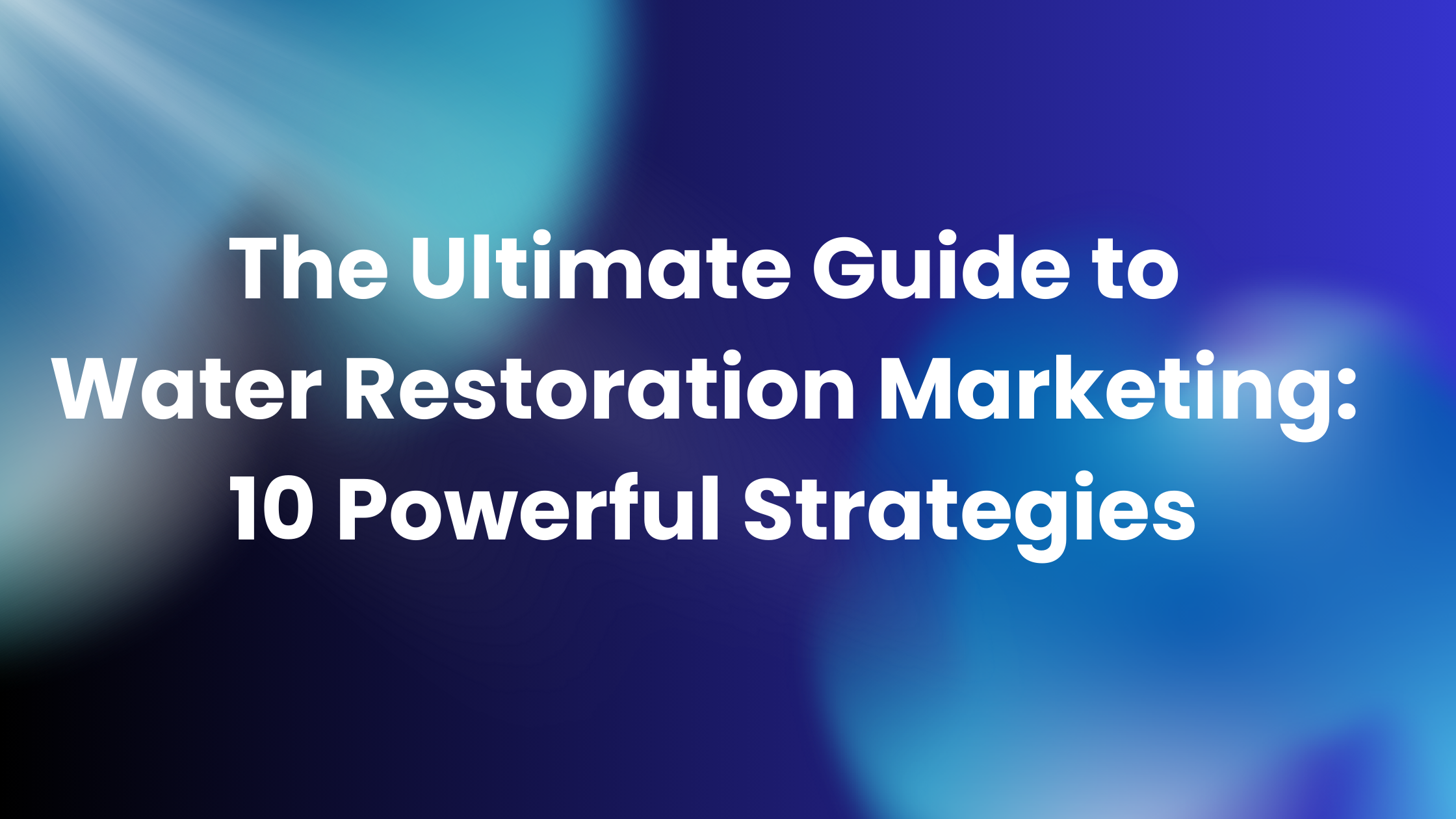

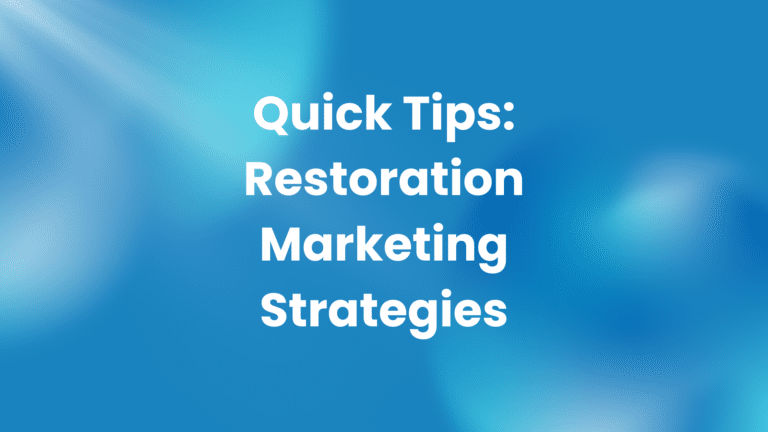
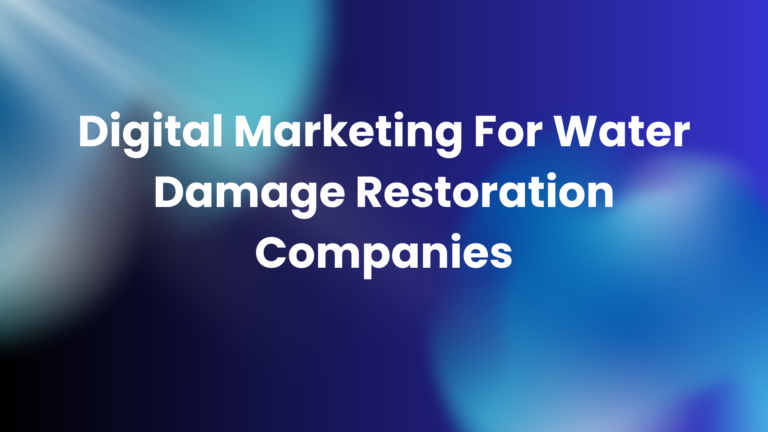
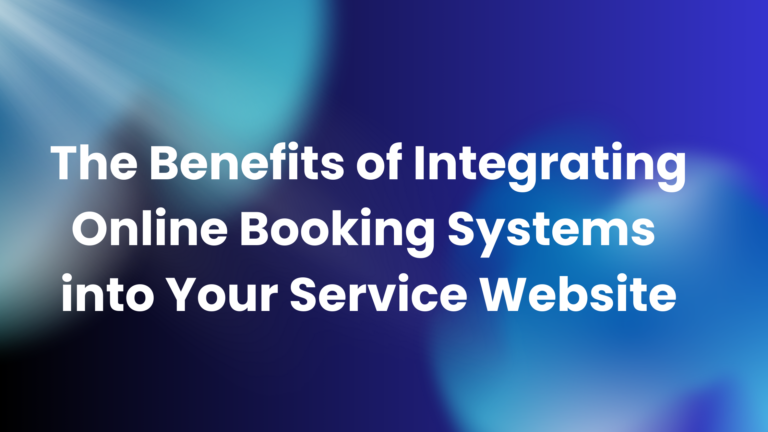
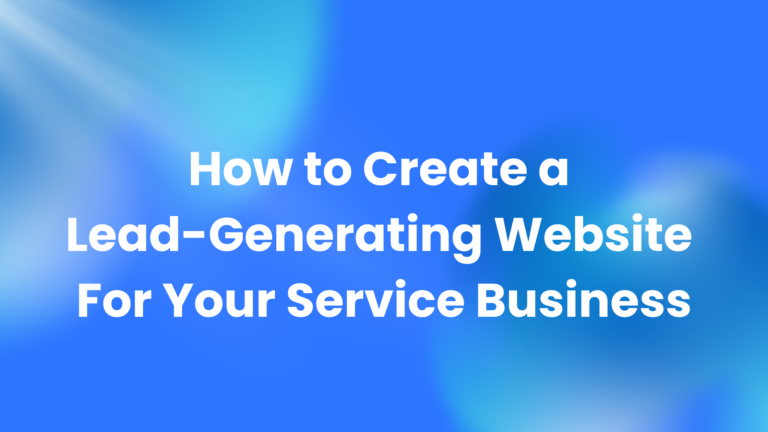

One Comment
Comments are closed.